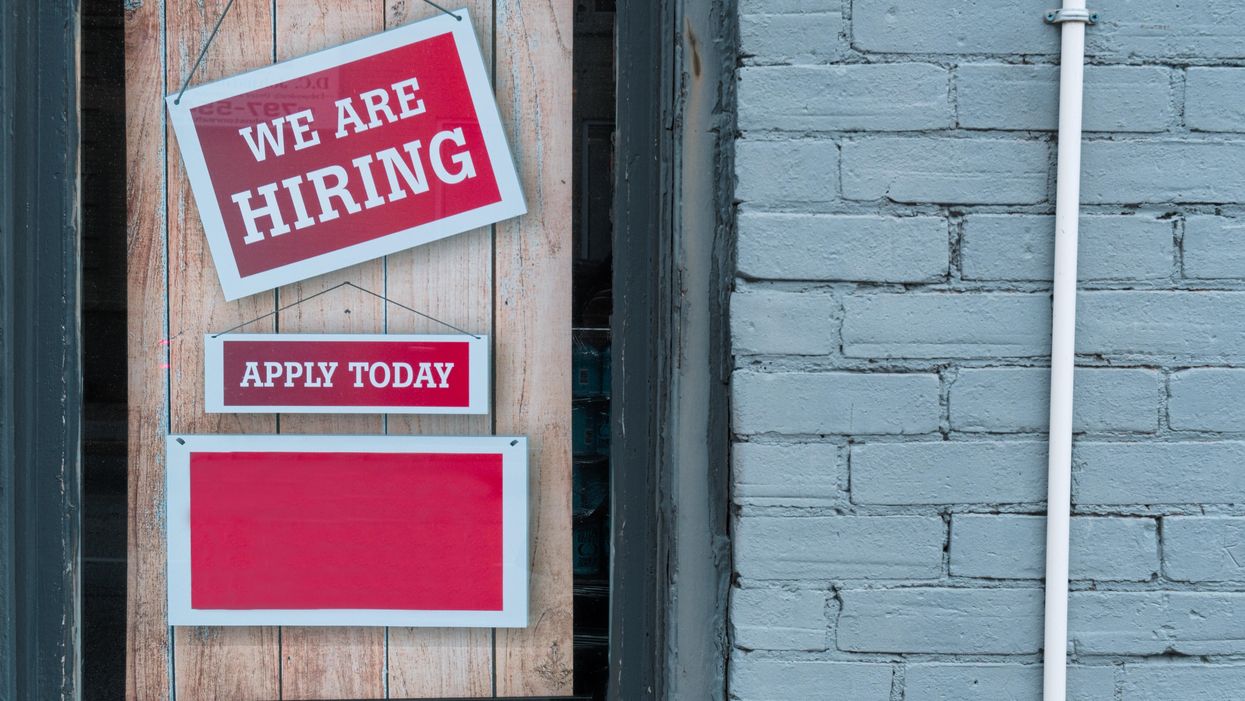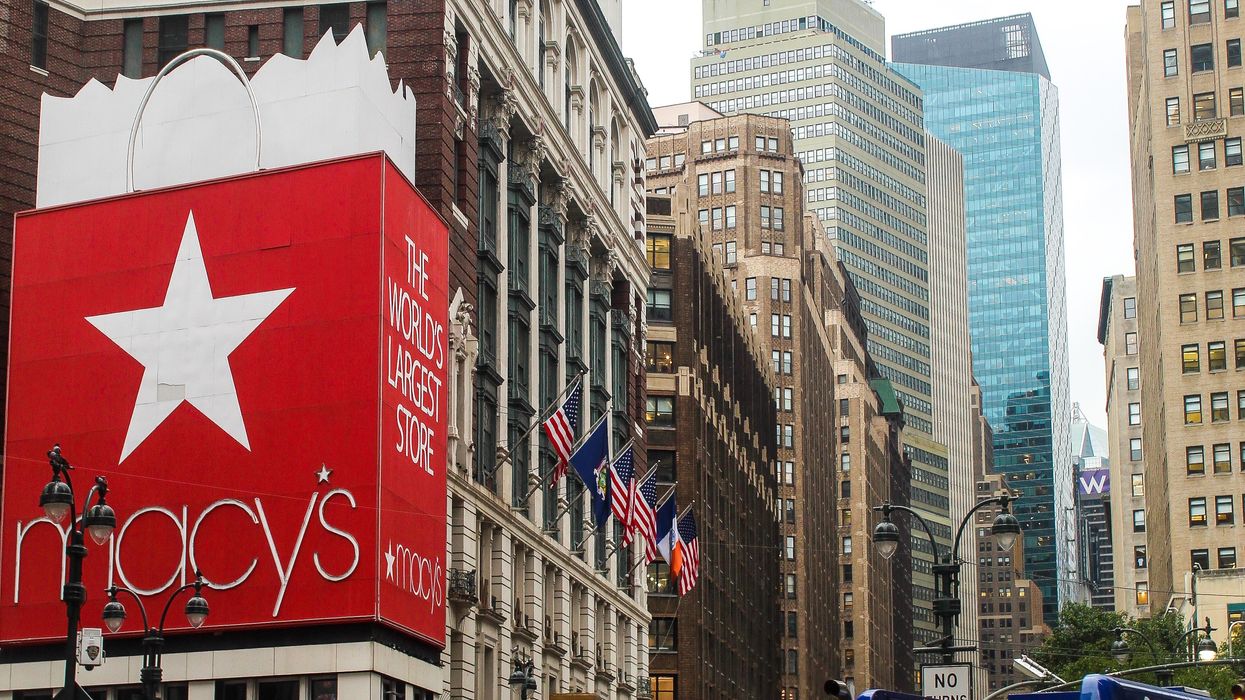A hot job market is helping to fuel a consumer trend that has been a hallmark of this year's bout with inflation: Even as prices go up, shoppers are continuing to spend.
As conditions remain unchanged, there's new hope that the Fed may be able to bring down inflation without sacrificing jobs, and the spending power they represent.
Friday's jobs report from the federal government showed that a streak of job growth continued in October: The economy created 261,000 jobs in October, which was better than expected. The unemployment rate ticked up to 3.7%, yet remains near 50-year lows. To be sure, the job situation isn't rosy for everyone, as tech companies including Stripe, Lyft, StockX and Chime held layoffs this week, while Amazon said it is freezing hiring. But on the whole, it's still a very tight job market overall.
That's good news for brands and retailers, because more employment bolsters the consumer economy.
The employment picture will help to lift retail sales during the holiday season, the National Retail Federation's Chief Economist Jack Kleinhenz said on Thursday. The NRF is forecasting 6-8% growth in holiday sales this year. While that would be slowdown from 2021, it comes as consumers have been "steadfast in their spending and remain in the driver’s seat,” Kleinhenz said.
The fact that new jobs are coming online and that employment costs including wages grew 5% is contributing to continued moderate growth in consumer spending, as reflected in recent GDP and retail sales numbers. Kleinhenz said the job market is "pivotal" to the consumer economy.
"It’s the strength of the labor market that is really fueling the spending, even as we have inflation," Kleinhenz told reporters. "Demand for labor is strong. There is turnover, but yet workers are able in a very short period to find a new job. So there’s no indication right now that we’re seeing any layoffs picking up and we do expect job gains to offset any significant pullback in spending."
 Employment rose over the last year. (Courtesy photo)
Employment rose over the last year. (Courtesy photo)
However, Friday's data isn't likely to bring any good tidings at the Federal Reserve as it seeks to cool off the labor market. This week, the central bank continued its campaign to raise interest rates with a fourth straight increase of 0.75%. The hikes are the highest in 40 years, and the aim is to whack demand in the economy so that inflation will come down.
Typically, evidence of these blows would shows up in a "softening" of the labor market, as Fed Chair Jerome Powell put it, which is Fed speak for unemployment. It's among the signs that the interest rates could be dragging the country into a recession.
But Friday's data offers just the latest sign that, like consumer spending, the job market isn't budging. In fact, Powell said it is "overheated" due to a mismatch of supply and demand. Job openings are continuing to increase, and there are more jobs than jobseekers to fill them. According to this week's JOLTS data from the Labor Department, there were 1.9 job openings for every person looking for work in September.
Powell warned of some pain, but all we're getting are gains.
All in all, the jobs data is "highly unusual," Powell said Wednesday, bringing visions of FOMC economists scratching their heads. Inflation is also persisting at 40-year highs in ways that the central bank did not expect. That means the Fed will have to hike interest rates even higher than it had previously forecast, Powell said Wednesday.
Nothing in Friday's report appeared that would change that stance, analysts noted. Following the jobs report, Bank of America Global Research lifted its forecast for the rate at which the Fed will finally stop its hikes by a quarter percent, to 5-5.25%.
Analyzing the jobs report, a BofA Global Research report noted that while hiring is moderating, "with the 3-month moving average slowing from 381K to 289K, but the pace remains robust and will not be much comfort to a Fed that is actively trying to cool the labor market."
 The Fed's benchmark interest rate, 2018-present. (Courtesy photo)
The Fed's benchmark interest rate, 2018-present. (Courtesy photo)
While the economy is holding up now, this could all still lead to a recession come next year, and there are economists who think it will. Former US Treasury Secretary Larry Summers is among them. Powell himself said Wednesday that the window for a so-called soft landing, in which interest rates rise without doing much economic damage, has "narrowed." After all, there is a lag between the time when rate hikes are implemented, and when they begin to take effect.
But thanks to the job market, there may be a way to get to the other side without completely crushing employment.
On Wednesday, Powell held out the idea that the result of these strange times may be that unemployment doesn't prove to spike, no matter what the central bankers throw at it. With employment so strong now, Powell suggested that perhaps the correction that is needed could take place not through job losses, but a decline in job openings. From the Federal Reserve's transcript of Powell's remarks (Emphasis ours):
We want wages to go up, we just want them to go up at a level that's sustainable and consistent with 2 percent inflation. And we think we can, we do think that given the data that we have, that this labor market can soften without having to soften as much as history would indicate through the unemployment channel. It can soften through job openings declining, we think there's room for that. But we won't know that, that'll be discovered empirically.
it would be an unusual way to navigate out of such a period of inflation. But given the past three years, that would probably be fitting.
Whatever happens, jobs and inflation will continue to be intertwined. In a twist, a big part of the Federal Reserve's actual goal in bringing down inflation is to fulfill its mandate of "maximum employment." Over the last year, Powell has said that reducing inflation is the only way to get to a labor market that works for everyone. Yet it is the current labor market that is putting down a big roadblock to that effort, for now.

 Employment rose over the last year. (Courtesy photo)
Employment rose over the last year. (Courtesy photo) The Fed's benchmark interest rate, 2018-present. (Courtesy photo)
The Fed's benchmark interest rate, 2018-present. (Courtesy photo)








